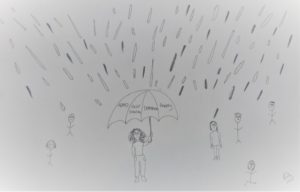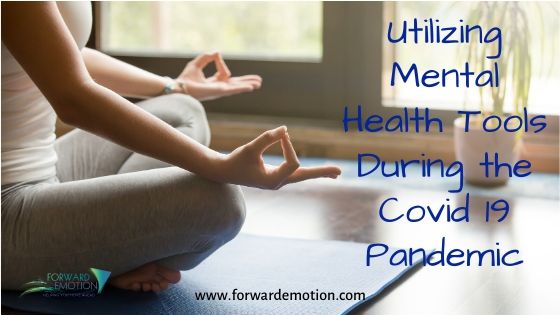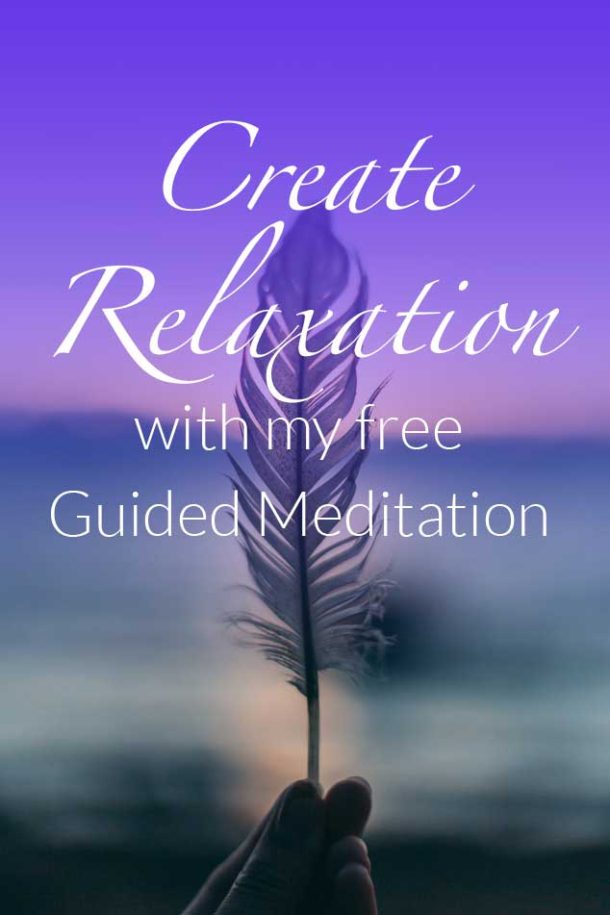March has been one hell of a month. With schools and businesses shut down across the country without warning, everyday necessities like toilet paper and bread becoming unavailable overnight, and the world-wide COVID 19 pandemic on everyone’s mind, life has gotten very stressful very quickly for a large majority of the population…and that is putting it lightly!
As I’ve continued to work with my clients, both in-person and now through virtual appointments, one thing has stood out to me. My clients with anxiety and/or a history of trauma are coping very well with these new challenges. In fact, many of them are calmer and less fearful than other people who have not struggled with anxiety or symptoms of trauma in the past. This is partially because they are consistently using the coping tools that work best for them, and partially because living on high alert and waiting for the proverbial “other shoe to drop” is how they are used to living.
When someone lives with chronic anxiety and/or symptoms of trauma, they live through every day in a hypervigilant state of mind. It is a constant feeling of fight or flight that may dissipate slightly now and then, but never really goes away for good without treatment and a lot of work. People with mental health issues are always waiting for that bad thing to happen to them or someone they love. They never get to truly relax. Of course, everyone experiences chronic anxiety or PTSD differently. Some people report feeling as though they are paralyzed with fear, or unable to make simple decisions like whether to run an errand or decide what to do next. Others experience panic attacks with symptoms that mimic a heart attack so closely that they end up in the emergency room hooked up to monitors and machines.
The news coverage about COVID 19 is not helping any of us feel better. Just like I wrote back in September of 2019 in an article for Conscious Community Magazine, the never-ending news reports are causing overwhelming feelings of fear. This virus took the already dramatic and often terrifying news and ramped it up by about ten levels. It is important to remain knowledgeable about this virus, but when each and every headline seems to paint a more dismal picture, it is hard to not live with a constant fight or flight feeling. Too much media makes you question the truth until you do not know what to believe anymore, let alone trust your own instincts or decision-making skills. It’s almost another form of gaslighting as we talked about last month in our blog.
 One of my art therapy clients gave me permission to share a drawing that was made during a session, talking about their feelings regarding COVID 19 and the changes happening in the world. They drew themselves holding an umbrella in the middle of a rainstorm. Each raindrop was something else happening in their world, and the panels of the umbrella were made up of the issues they deal with that have caused them to seek therapy and develop coping tools. Instead of seeing their mental health as a negative thing, they are now viewing their mental health as a positive quality that has prepared them for this stressful time!. I was thrilled to see that they felt empowered and protected by the tools that we have worked on during their treatment. It is truly a testament to the importance of mental health and why all of us need to give our self the time and energy to work on developing positive coping tools, regardless of an official mental health diagnosis. Therapy should be seen as preventative care. What is happening in the world today is even more of a testament to this.
One of my art therapy clients gave me permission to share a drawing that was made during a session, talking about their feelings regarding COVID 19 and the changes happening in the world. They drew themselves holding an umbrella in the middle of a rainstorm. Each raindrop was something else happening in their world, and the panels of the umbrella were made up of the issues they deal with that have caused them to seek therapy and develop coping tools. Instead of seeing their mental health as a negative thing, they are now viewing their mental health as a positive quality that has prepared them for this stressful time!. I was thrilled to see that they felt empowered and protected by the tools that we have worked on during their treatment. It is truly a testament to the importance of mental health and why all of us need to give our self the time and energy to work on developing positive coping tools, regardless of an official mental health diagnosis. Therapy should be seen as preventative care. What is happening in the world today is even more of a testament to this.
One thing that we can do during this stressful (and downright peculiar) time is to look at some of the hidden benefits of social distancing. If nothing else, this new lifestyle is forcing us to slow down. Without all of the scheduled kids’ activities, early morning meetings, post-work client dinners, and other obligations outside of the home that keep us rushing through our lives, many families are spending more time together, eating more meals together, and coming up with projects and activities to do together. In fact, there is an interesting video called Thank You, Coronavirus that shows some of the changes that have been happening around the world as a result of practicing social distancing.
Now, before you think I’ve gone all Stepford Wife on you, I also know that not all families are taking happy family walks and playing a few games of Uno before bed. A virus cannot turn every household into Little House on the Prairie, 2020 edition. There are people cooped up together who are fighting, who have lost their income, who are worried about money or unable to find regular grocery items at their local store. There are marriages that were already struggling that are under more pressure than ever. There are people experiencing feelings of depression and sadness as they find themselves isolated from their usual routines. That is why mental health is so critical, and why mental health practitioners should continue to offer assistance, even in the form of virtual sessions. In fact, technology has offered even more creative ways to allow therapists like myself to offer EMDR and art therapy virtually.
Whether you are currently getting assistance for anxiety or other mental health issues or not, there are several ways that you can give your own mental health a boost without breaking the rules of social distancing. Reading a book, writing in a journal, taking a walk, or playing with your pets offers an immediate boost of joy. Cleaning and decluttering or taking an online class can help you feel as if you are being productive. There are over 100 virtual field trips that adults or children can enjoy, everything from art museums to aquariums to national parks. You can take a variety of free online courses at institutions like Harvard or Yale or enroll your children in online courses from Otus.com.
Whether it is a small task or a larger project, it is important to focus not only on the news but on your own mental health and well-being. Social distancing does not mean that you are alone in this. In fact, we prefer to think of it as physical distancing because of all of the ways that we can connect socially without being in physical contact. We are all in this together, and we can help you develop your own umbrella to keep you safe, no matter what storm strikes next.


